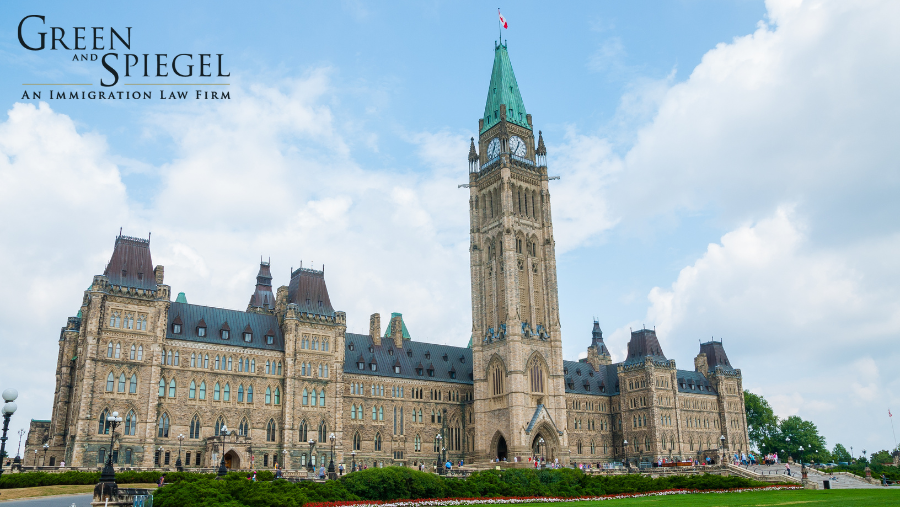The North American Free Trade Agreement (NAFTA) agreement has liberalized trade between Canada, the United States and Mexico since it came into effect in 1994 and has increased the volume and value of trade between the three countries. It has been nearly 25 years since the NAFTA came into force and the world has changed – we live in a different political, economic and global landscape.
It is difficult to keep up to pace with the developments in the current trilateral talks between Canada, Mexico and the United States to modernize the NAFTA agreement. Much of the attention has been on the automotive sector and dispute settlement, less attention has been given to the opportunity to modernize the NAFTA, particularly temporary entry for business persons. Chapter 16 of the NAFTA provides 4 categories of business persons: business visitors; professionals, intra-company transferees; and traders and investors. These categories facilitate cross-border labour mobility by streamlining labour market restrictions on foreign workers.
There are 63 specific professional occupations covered in the NAFTA allowing professionals such as engineers, accountants, doctors, nurses, etc. to provide pre-arranged services.[1] In 2017, there were more than 10,600 NAFTA Professional work permit holders in Canada.[2] Under the NAFTA Professionals category, a selected professional can enter Canada to provide their services to a Canadian employer or company with a work permit that can be obtained upon entry at the border. This allows Canadian businesses to quickly respond to business demands and fill labour needs with skilled workers from the United States and Mexico.
However, occupations that were in demand in the 1990s are no longer facing shortages while new occupations not contemplated by the original agreement have emerged, particularly within the information technology industry. With NAFTA 2.0 negotiations in full swing, there is an opportunity to update and modernize the occupations list to include 21st century occupations to include a more comprehensive and progressive list of occupations such as social media manager, e-commerce, mobile app developer, deep data analysts, artificial intelligence engineer, financial analyst, etc.
Some have proposed to do away with a specific occupations list and instead focus on the skills and education level requirements of the position to facilitate the entry of highly skilled workers who possess post-secondary education. Others have proposed a “negative list” of occupations whereby occupations contained on the list are not covered but those that do not appear on the list can enter. Some have also pushed for expansion into skilled trade occupations to be included to facilitate labour mobility in trades such as construction in anticipation of increased infrastructure spending over the next decade. If the occupations list were expanded to include new occupations, a commitment to review and update the list periodically should also be made in order to remain relevant in changing economic times and labour market conditions.
A modernized agreement could also expand on the types of business activities authorized for business visitors. The NAFTA currently includes activities that are part of the usual business cycle such as research and design, growth, manufacture and production, marketing, and after-sales service. However, expansion into e-commerce and new forms of trade in modern and future business models could be made to ensure that business visitors and investors have access to markets and the ability to conduct business activities unencumbered by restrictions on their activities.
The three parties to the NAFTA have been in intense negotiations to draft a new NAFTA agreement since 2017 and the fate of the NAFTA remains very much unclear. With the Mexican Presidential election set for July and US congressional midterm elections in November, the unofficial deadline of May 17, 2018 came and went without an agreement in principle. Political and economic decision-making on tariffs and duties have also complicated the negotiations. Addressing labour mobility and modernizing the Professionals occupation list is an opportunity to reflect labour market needs in today’s global economy. However, it would be optimistic to believe that Chapter 16 of the NAFTA could be renegotiated and modernized in light of the strong positions held by the NAFTA parties.
NAFTA is not Canada’s only free trade agreement. Bi-lateral trade agreements, including Canada-Chile FTA, Canada-Peru FTA, Canada-Colombia FTA, Canada-Korea FTA and multi-lateral agreements including the Canada-European Union Comprehensive Economic and Trade Agreement (CETA) Comprehensive and Progressive Agreement for Trans-Pacific Partnership (CPTPP) positions Canada well for investment and access to markets. These agreements combined makes Canada the only country in the G7 with free trade access to the Americas, Europe and the Asia-Pacific Region.[3] Canada is also in various stages of discussions with India, China, Brazil, Argentina and other countries for comprehensive free-trade agreements. These agreements better reflect current priorities and best practices which could be modelled by “NAFTA 2.0”.
To remain competitive in a global economy, Canada needs the ability to recruit skilled people internationally. Facilitating labour market mobility in the NAFTA region would increase efficiencies and economic growth. Moving forward, NAFTA 2.0 can provide the opportunity to integrate progressively and modernize the economies in North America, however the future of free trade with Canada appears to be with other countries and agreements outside of NAFTA.
[1] NAFTA Appendix 1603.D.1 – Professionals.
[2] Source: IRCC, Canada – International Mobility Program work permit holders on December 31st by province/territory of intended destination and program, Monthly IRCC updates, February 28, 2018
[3] Overview and benefits of the CPTPP. http://international.gc.ca/trade-commerce/trade-agreements-accords-commerciaux/agr-acc/cptpp-ptpgp/overview-apercu.aspx?lang=eng




